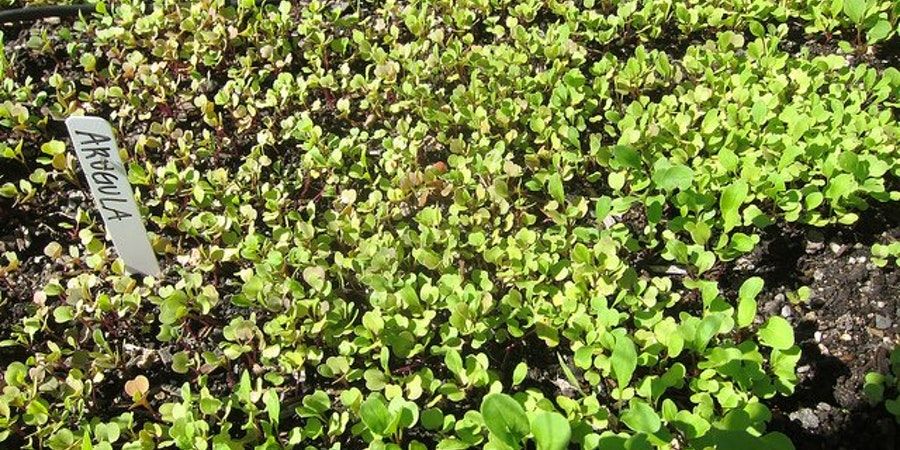10 Tips for Growing Your Own Food
Many of us have become familiar with avoiding grocery stores and planning meals based on what food items are available for online delivery. Now that spring is here, you can start growing delicious food at home.
On last week’s episode of Fresh Take, author, cook, journalist, and gardener, Amy Pennington of GoGo Green Garden, shared her top tips on how to grow food at home. Whether you’re a beginner gardener or an expert green thumb, follow these tips to bring fresh vegetables and herbs to your table that you can’t find anywhere else.
Getting Started
1. Make the Most of your Space
Finding the right space is the first step to planting your garden. Evaluate your space to find the location that receives the most sunlight. Leafy greens require 6 to 8 hours of direct sunlight every day, while fruiting plants like tomatoes and cucumbers require 10-12 hours of sunlight. Avoid placing your garden against the fence in your yard as this can cast a harsh shadow over your plants, reducing the amount of light they receive.
2. Prepare your soil
Growing tasty food requires nutrient-rich soil. You can plant your garden directly in the ground or in a raised bed. Raised beds can help with drainage if you live in a wetter climate. Sunlight will also hit the side of the bed which warms the soil faster than if you were planting directly into the ground, speeding up germination and helping plants grow.
Whether you decide to start your garden in a raised bed or in the ground, you will need to amend your soil with fertilizer so that it can provide vital nutrients to your plants. Compost is a great natural fertilizer that contains living microbes along with vital nutrients plants need to survive and mature. You can make compost at home or purchase bags of organic, local compost from a nursery near you.
If you are growing your plants directly in the ground, remove rocks and root structures from neighboring trees and old plants from your soil. Then, mix compost into the top layer of your soil. If you are growing in a raised bed, you will need to purchase topsoil which naturally contains clay and sand. Mix the compost into the top layer of the soil as you would for an in-ground bed.
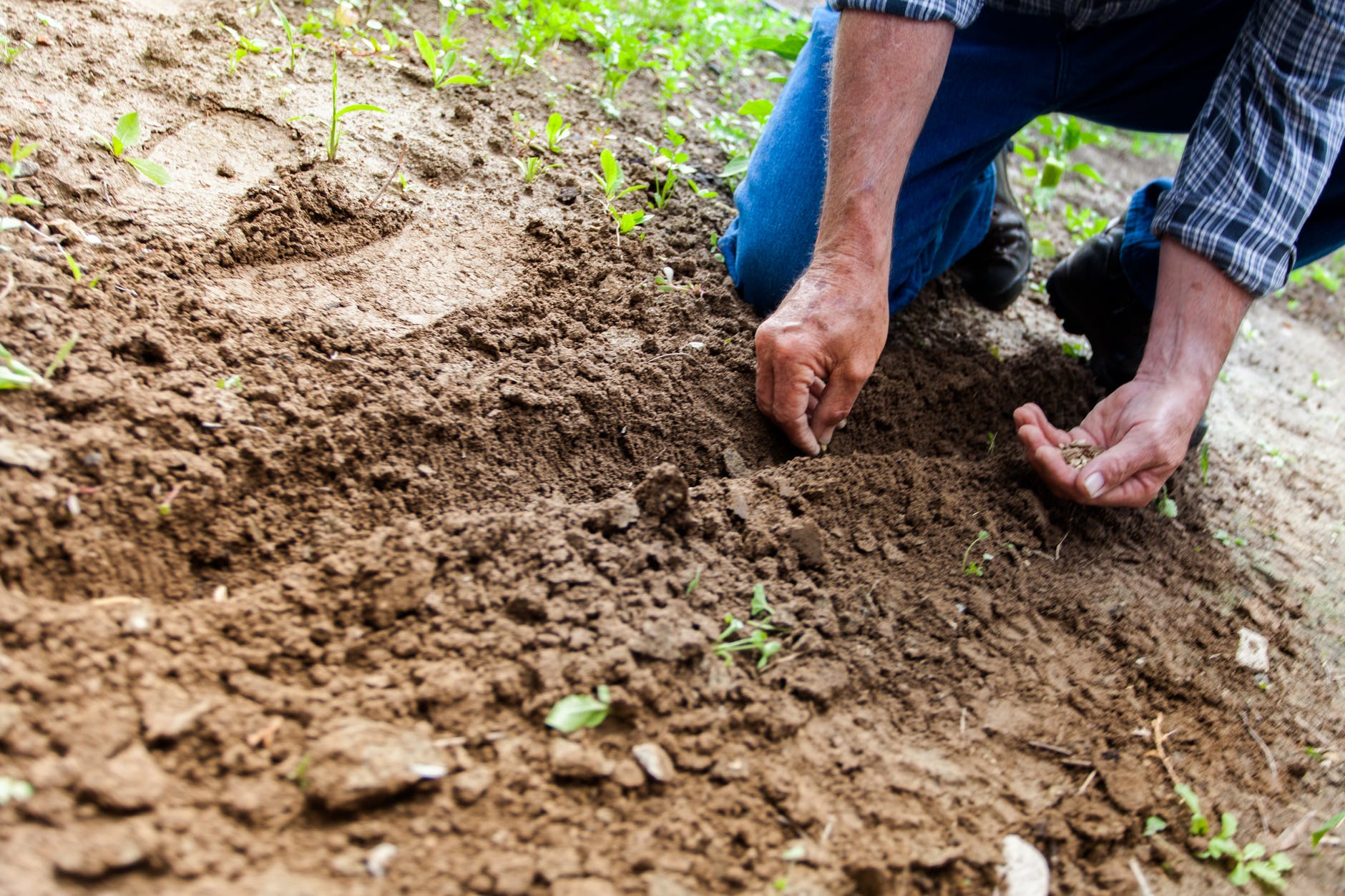
3. Decide what and when to plant
Your environment and seasonal climate will shape what annual crops you should plant in your garden. Amy shared the chart below to help residents in the Pacific Northwest know the best time to plant different veggies.
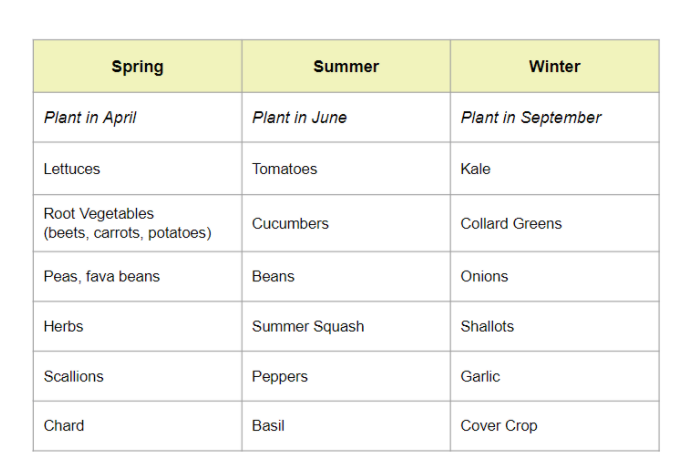
When planting your garden, you will always need to have a crop on your soil. Cover crops put nutrients back into the soil and prevent weeds from growing in your garden when your beds are not being used for regular crops. You can purchase a cover crop which typically contains cereals, clovers and legumes from a store near you.
Amy recommends that beginner gardeners start by growing lettuce as it is low cost, low maintenance, and quick to grow. This will help you see the gardening lifecycle from start to finish.
4. Fertility rotation
Fertility rotation is the act of planting different crops in the same area in varying seasons. It considers that different plants require different nutrients and that those plants may take up nutrients at different rates. Fertility rotation is beneficial as it helps improve soil fertility over time while minimizing soil depletion, pests and disease. It is especially important to rotate disease-prone families like nightshades, members of the onion family and members of the cabbage family.
To plan for fertility rotation, begin by making a chart labeled “Leaf,” “Root,” Flower” and “Fruit” as depicted below. Then list the foods you would like to harvest from your garden underneath their respective columns. This will help you begin mapping a fertility rotation for each growing season. Rotate your crops every season so that you aren’t planting the same crops in the same place.

The chart below depicts a typical bed design in spring. If you have two beds, plant your leaf vegetables and root vegetables in one bed and plant fruit and flower crops in the other. During the summer, plant your leaf vegetables and fruit and flower crops in the opposite bed. You can still follow a fertility rotation if you only have one bed by flipping the plants within the bed.
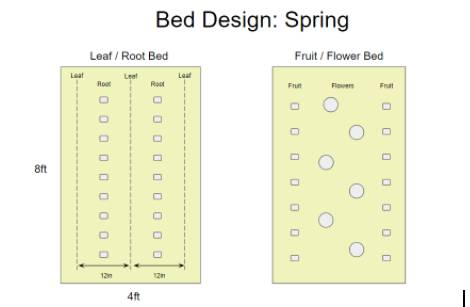
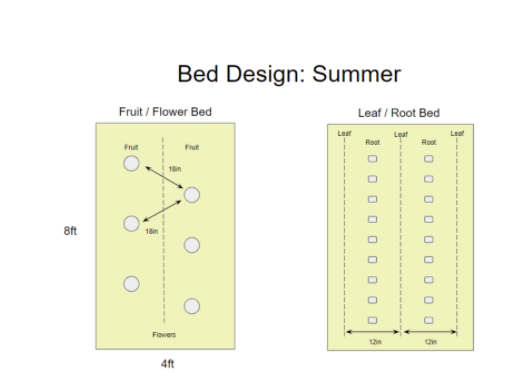
5. Don’t plant everything all at once
Keep in mind when planting your garden that if you plant everything at once, your produce will mature within one week of each other. As a result, you won’t be able to eat everything you have planted. Use the method of succession planting—staggering planting throughout the season to extend your harvest—to make sure you have a steady amount of produce to harvest throughout the year.

Maintaining your Garden
6. Watering your plants
According to Amy, most people do not water their gardens enough. In general, you should water your garden every day. Understand how your watering strategy is supporting the growth of your plants by taking the time to understand your soil. Take a handful of soil in your hand one hour after you have watered your garden. If the soil holds together in a dense clump, you have overwatered. If the soil is bone dry, then you need to water more. Adjust the amount of water you are giving to your plants accordingly.
7. Find the cause behind your growing problems
Encountering growing pains? Three variables may be affecting the growth of your plants: lack of sunlight, lack of nutrients and the amount of water. Only you know your space, so evaluate your growing conditions to find the area you need to adjust such that your plants can grow and mature.
8. Keep pests out of your garden
Large animals and insects can be a challenge to avoid when growing your garden. To keep large pests out, take chicken wire and build a hoop around your plants. Water and sunlight will be able to nurture your plants, but large critters will be kept out. Amy recommends lining your garden with cinnamon if large critters are still getting into your garden. Over time, the animals that frequent your garden will grow less interested.
Manually remove slugs by creating a trap out of newspaper where slugs will congregate underneath. Diligently removing slugs daily will stop them from coming back.
To remove insects like aphids from your leafy greens, turn your hose on a high setting and spray the insects off of your vegetables until they’re gone. Repeating this daily and rotating your crops seasonally will help to keep aphids out of your garden.
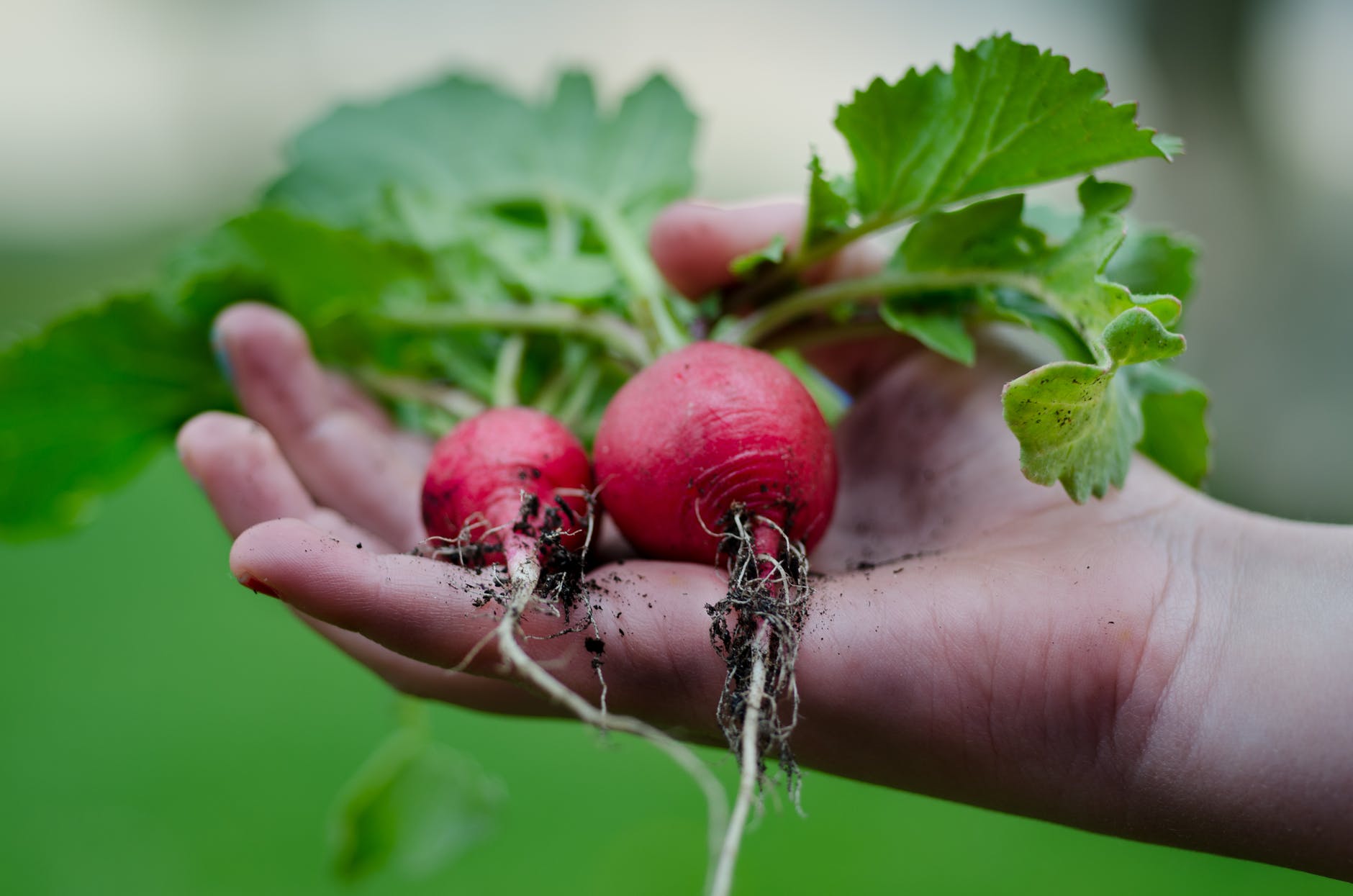
Harvesting Fruits, Veggies and Herbs
9. Harvest at the right time
Make sure you harvest all of your food when it is finished growing. The more you harvest from the plant, the more the plant will produce. Harvesting on time inhibits the process of the plant dying ensuring that your plants will continue to produce food.
10. Save your seeds (if you have enough space)
Saving seeds from year to year can be beneficial if you have extra space to grow your garden. However, going to seed takes several extra weeks which limits the amount of space you have to start new plants. Amy recommends letting your plants go to seed only if you have extra space to sacrifice.
By following these tips, you will be ready to grow your own vegetables all year long! For more information about growing your own food, read Amy’s recommendations on Fresh Chalk.
